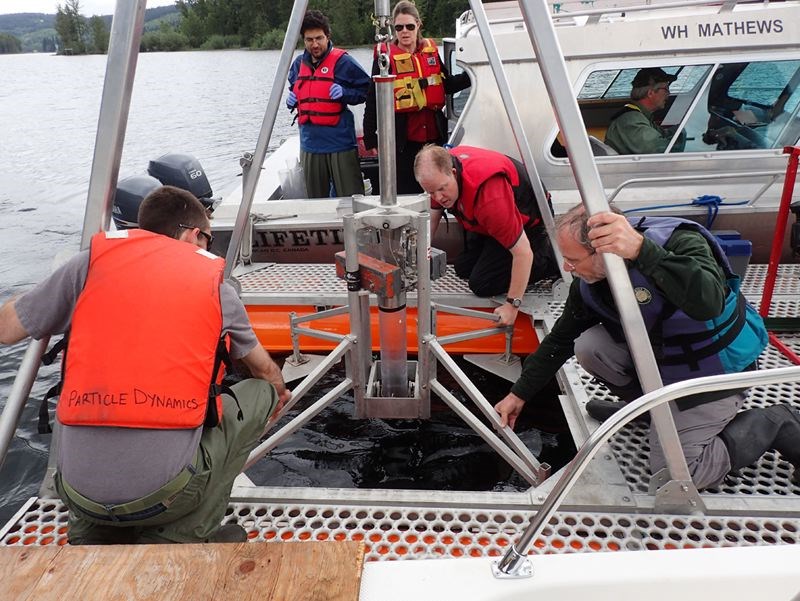Over the next three years, a group of researchers will follow the effects of Mount Polley mine tailings breach from the "physics to fish."
University of Northern B.C. professors Ellen Petticrew and Phil Owens have been studying the impacts of the dam disaster since 2014 when 24 million cubic metres of waste flooded from Hazeltine Creek into Quesnel Lake.
Now that work will continue at least another three years, after an influx of $800,000 from the federal government's Environmental Damages Fund, a pot that industries that pollute the environment pay into.
The team will track the movement of the tailings deposited at the bottom of the lake to see exactly how mobile the fine sediment is. Once it moves into the water column, it becomes available to organisms there - and that's a concern, Petticrew said.
"Then it gets into the food chain and continues up through the food chain," Petticrew said.
Past work monitoring the quality of sediment found the levels of some metals - like copper - were still elevated in 2016, with some indication that contamination entered the lake through "pulses" that appear to be controlled by hydrological conditions.
"The motions in the lake have the ability to move the sediments around and that's what we're interested in, to look at what the structure of the sediments are at the very point where the water meets the lake bottom," explained Petticrew, adding some researchers will study the "physical movements of the lake and how the lake mixing takes place and when it takes place and what kind of conditions are in the water column."
The nature of the tailings spill and the lake conditions make for an interesting case study, compared to other research which mainly looks at tailing breaches into rivers, which has much faster flowing water.
The lake often goes through a rocking motion, which helped spread the sediment into a "halo" that stretches several kilometres from the initial deposit site
"This is a very unique and unusual lake in that it's so very deep, very large and has these different basins," she said, adding the west basin has been most influenced because it has the bulk of the deposit.
"As much as we'd like to think it's just going to stay put there and be inert, we're looking to see how much material is moving away from that deposit, if it's going downstream and out into the Fraser (River) or if it's going up into the lake where it's going to be stored in these deeper environments."
The researchers hope to develop models to help them understand how much energy it would take to resuspend the material, and predict if that is likely to occur.
Over the summer, the team put in another meteorological station to help test wind conditions.

They also used a specialized corer on loan from the Bedford Institute of Oceanography to assess the physical condition at the bottom of the lake - in some areas as deep as 160 metres.
Petticrew said she was impressed with the instrument, which showed a white fluffy sediment that sat on top of darker, more natural material.
"This very light fluffy material has the potential to be mobilized if energy in the lake is high enough, (which) was something that we need to get back to the people who are presenting material from the mine who are indicating that the material is not an issue and is stable on the bottom," she said, adding more testing will have to look into the how much energy will reach those depths.
"We have visual evidence that it's not stable."
Owen said UNBC offered key "bridging funds" for the first 18 months of work until the big grant came in.
"It enables us to develop some of new avenues because the scale of the funding is greater so we're able to bring in different collaborators from UBC and Lethbridge and (Department of Fisheries and Oceans) who have other skills sets and equipment which will mean we can answer more questions."
The grant will also fund work by undergraduate and graduate students and post-doctoral scientists.
This work will give scientists and local residents a better understanding of the post-spill environment, said UNBC's president.
"The findings will also be applicable to other similar aquatic ecosystems across the country and will help in mitigating the impacts of future mining incidents," said Daniel Weeks in a statement.



